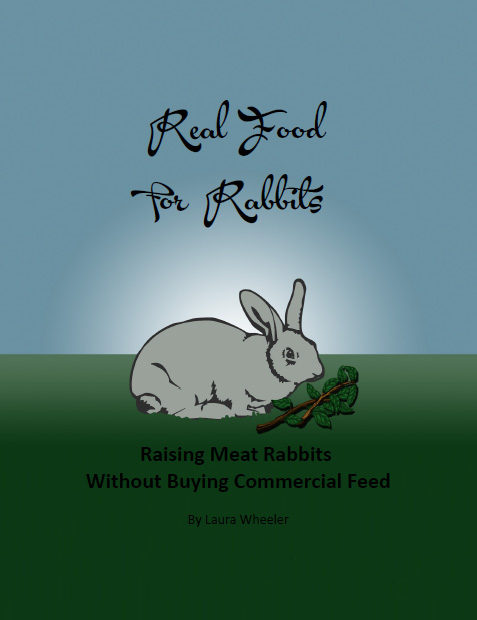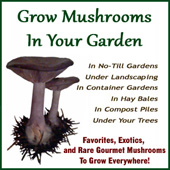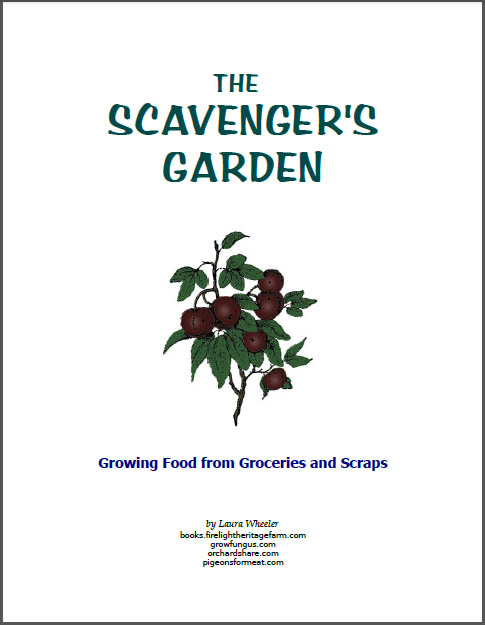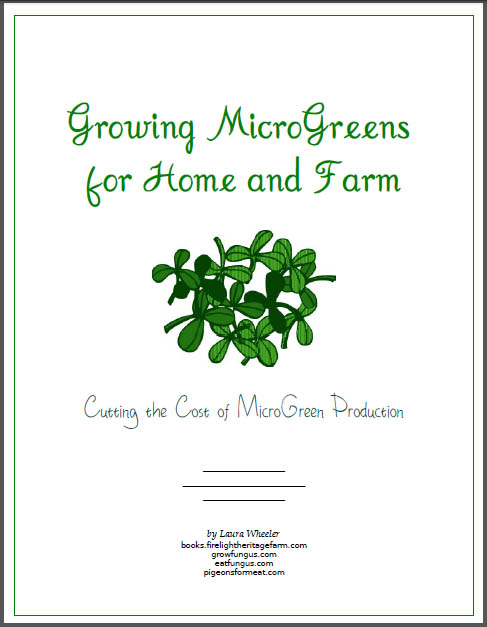 Click to Download Your Free Heritage Pickling and Culturing e-Book Now!
Click to Download Your Free Heritage Pickling and Culturing e-Book Now!
Instant Download, NO Registration Required!
What Can You Do on 1/4 Acre or Less?
Before you read this article, I hope you have read our overview of Self Sufficiency on 1 Acre, because it introduces some concepts that are important, and which can help you better scale down to a smaller size of land. The original article also lists our parameters and assumptions.
We operate here with some of the same considerations and limitations, but more so.
Remember the smaller the acreage, the more intensive you have to farm, and the smaller the animals that you can raise. You will have to bring in more forage from outside.
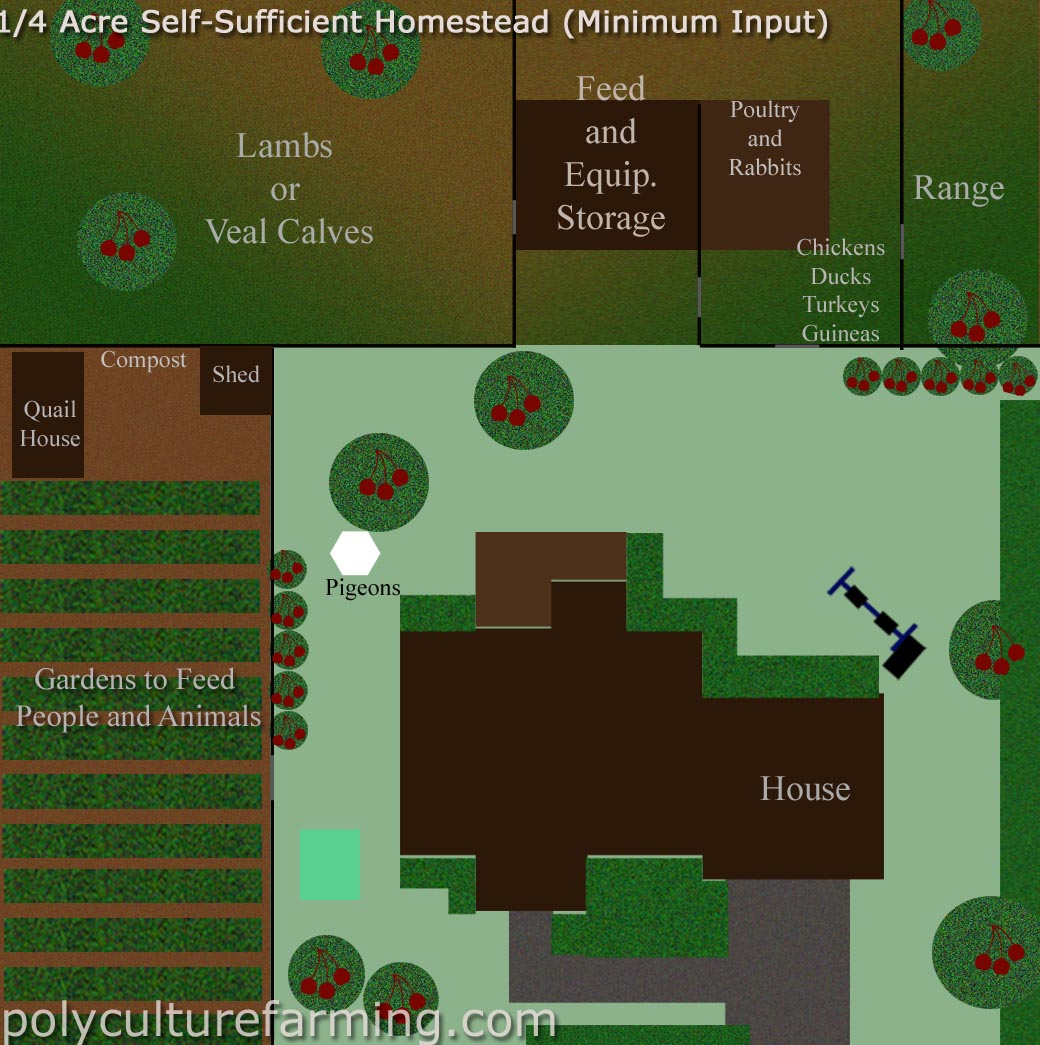 Save this image and open it on your desktop to enlarge it.
Save this image and open it on your desktop to enlarge it.
This image shows the greenhouse beside the house (the little green box), and instead of milk animals, focuses on meat and egg production from smaller animals. While it is possible to keep a milk goat in place of the calves or lambs, dairy animals are more costly to care for when all food must be input, and you get more return from the land with calves or lambs.
When adapting this concept to your home, you may have to rearrange many things. Garden patches may not be able to be all in one place - this shows this around the house and the edges of the yard, where there are green patches representing additional garden patches (good for herbs, greens, edible flowers, cabbages, even squash and tomatoes and other garden crops). You have to work with where your home is already placed, and may have land features, or existing trees or buildings, that affect where you can place your pens and gardens.
You also need to consider producing feed in more creative ways. Ornamental grasses are loved by rabbits, fruit tree trimmings make good feed for rabbits also, they'll eat the bark and some of the tender wood. Fodder feeds can be grown in a rack in a basement or enclosed porch, to help with self-sufficiency.
Focusing on using EVERYTHING as far as possible will help tremendously. Windfall fruits make excellent feed for every kind of animal, dropped leaves go into the compost or are used for deep mulch on the garden, or even for bedding for small animals. Looking at each element that your farm produces, including waste, and turning it into an asset somewhere else, helps to reduce your costs and make the food you produce more affordable.
We also have the addition of Quail, which can be quite productive in a small contained space, but Coturnix Quail require a shed or room off the house, because they do not do well outdoors in the winter.
We also introduce Veal in this farm model, because you can raise veal in a small space, on good hay (and fodder feeds), and milk (we cannot recommend milk replacer... it reduces the health of the animal, and is not as economical as it is made out to be), and veal can be a very good meat source.
Rose Veal is produced in this way, and it is a deep red color, and richer in nutrition than veal from calves that have been fed only milk replacer. This involves butchering the animal at about 8 months of age - when they are no longer really a calf, but more of a small cow. You get tender, digestible meat, in a fairly significant quantity, but you keep the cost of raising them low, and the space required is less than it is for raising a full sized steer. The smaller size is also easier to handle for those who wish to cut up their own meat.
Lamb is included for the same reason. Slaughtered at 6-8 months of age, you get tender meat, which you can process by yourself if you wish because it is small and easy to handle, and the cost of raising and amount of feed you have to produce is greatly reduced. Some people prefer to raise meat goats, which is a natural sideline for those keeping milk goats, but lamb is more easily digestible for many people, and does not require aging prior to use.
Red meat can come from those sources, and from duck and goose - in fact, if you do not wish to keep calves or lambs, or goats, you can keep a thriving herd of Muscovy Ducks, which provide amazing red meat. White meat comes from chickens, and rabbits, and quail. Turkeys if you wish. Eggs come from any poultry you raise, and the quail.
Fish can be raised in the greenhouse, or in a pool in the back yard. I encourage you to look at fish OTHER than Tilapia, because many do well in crowded conditions, grow fast, and can winter over outside (which tilapia cannot do).
If you need an income crop, you have eggs, both fresh and hatching eggs, and you can grow intensive crops such as insects, mushrooms, garlic, or other crops which take small spaces to produce a large quantity. Raising an extra veal calf, or a couple of extra lambs can give you a salable animal also.
Pens are small at this size farm, but production can be high if you use the gardens and livestock synergistically, and make sure that NO food goes to waste, and that the manure from the animals goes back into the gardens or mushroom production, or something else which gives you something back.
This shows a wide variety of livestock, and you don't need to do all. You will find though, that if you do a variety, and choose wisely, that it will enhance the synergy of the farm. Fish, poultry, large animals, mushrooms, fruit crops, and vegetable crops, all work together in a really amazing way that is less productive when you leave out a piece of it. You don't have to do it all. But don't be afraid to assemble a variety, one thing at a time, and build something that works together, and protects you against catastrophic loss of a single element.
This is where we started - actually a little less space! Our first farm was 1/6 of an acre in city limits.
If this is what you have, you can maximize the production and make it work.
